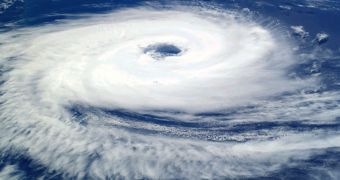A group of investigators at the Massachusetts Institute of Technology (MIT), in Cambridge, says that tropical cyclones will become more intense by 2100, even if climate change is stopped dead in its tracks right now. At the same time, the storms will affect areas that are now considered safe.
Though the team took into account scenarios in which we stop climate change from going too far, those are unlikely to occur in real life. This has been made more than obvious over the past 4 years or so, when officials meeting at UN climate conferences manifested to willingness to take action.
Therefore, scenarios in which massive greenhouse gas emissions continue to drive global warming and climate change are far more likely to occur in real life. What this means for tropical cyclones is that they will extend their ranges to include North America, East Asia and the Caribbean.
Some of these areas are susceptible to experiencing hurricane damage even now, but the research team says that the situation will grow even more dangerous until the end of the century. Even the eastern coast of the United States will be more at risk over the coming decades.
In collaboration with colleagues at the Yale University, the MIT group determined that growing income and global warming are the two factors most likely to drive the value of hurricane-induced damages high up. This may or may not be accompanied by more loss of lives.
The model researchers used to make these predictions was detailed in a paper published in this week's issue of the top scientific journal Nature Climate Change. The model also revealed that the absence of climate change would still not change this trend.
Researchers say that global warming will continue unabated, as will the emission of GHG. If this happens, the world's atmospheric patterns will change even in the absence of global climate change.
At the same, more and more people will start to live alongside hurricane-prone coastlines, primarily because the world's population is expected to reach at least 9 billion people by 2100. Worldwide annual damage from hurricanes could therefore increase from $26 billion to $56 billion.
However, if climate change is factored in, the damage level could reach as much as $109 billion annually. That is the equivalent of building an orbital outpost such as the International Space Station (ISS) every year.
In the future, researchers will develop a model that will try to determine how the population will move around once hurricanes begin devastating coastline communities.

 14 DAY TRIAL //
14 DAY TRIAL //